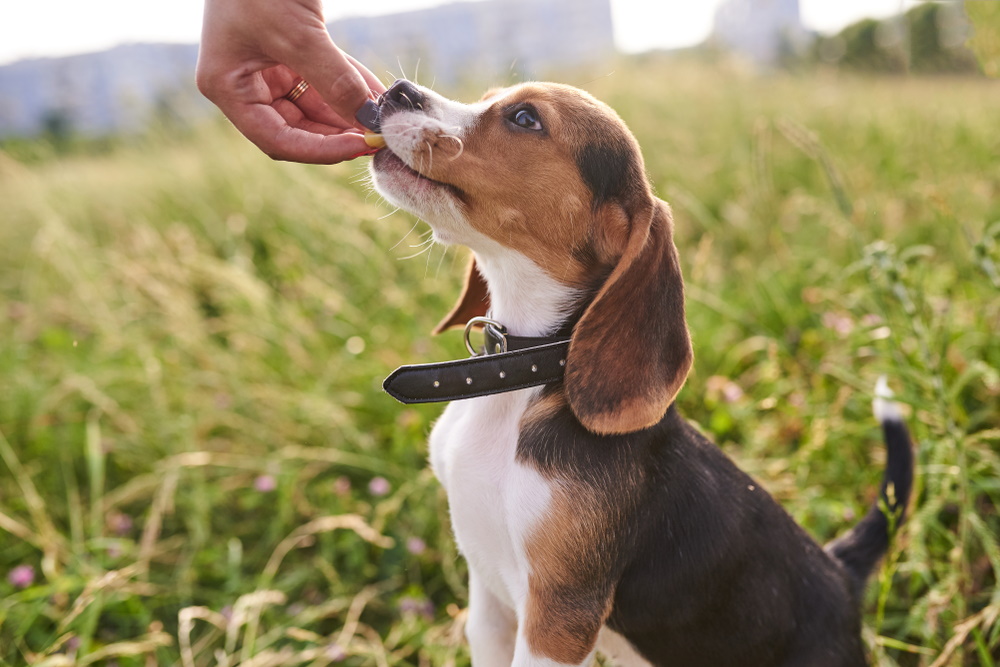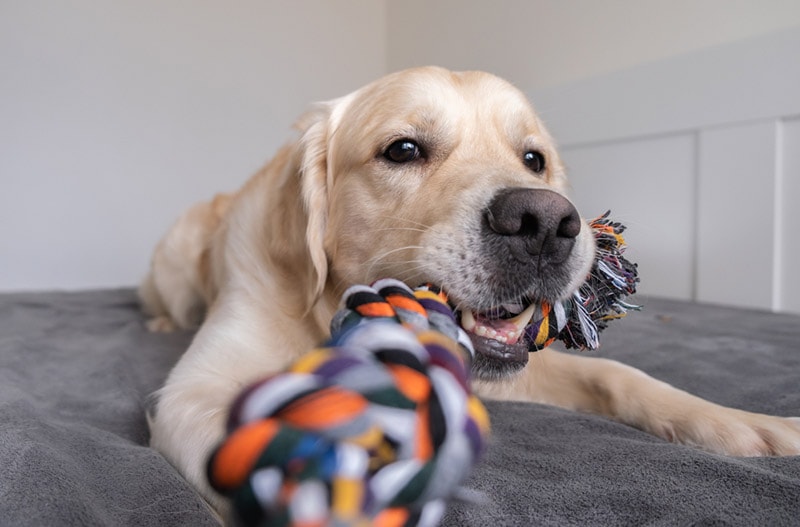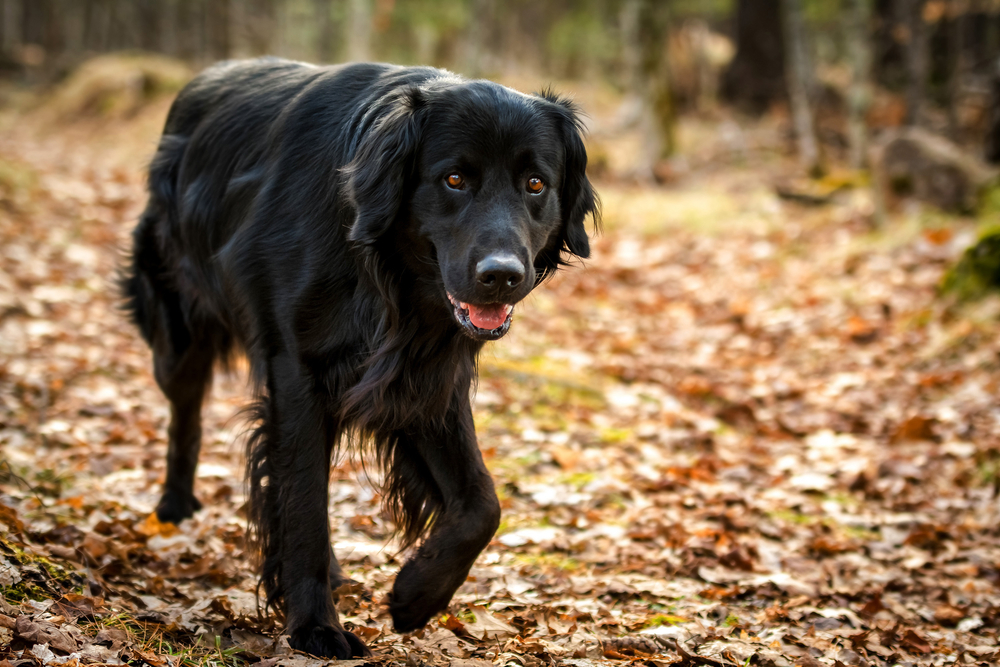In this article
Have you ever wondered if your furry friend is capable of faking an injury? Although dogs do not intentionally fake injuries to deceive you, they can do things that we interpret as faking injuries. Dogs may overreact to something due to pain or fear, and they can also be accidentally conditioned to expect a reward when they limp or hold their paw up awkwardly. They may also experience intermittent pain, meaning their signs of injury come and go.
In short, the answer to this question is “Sometimes, it’s possible for some dogs to ‘fake’ injuries, although this is not very common, and more often than not they are indeed injured or ill!” Dogs are smart, intuitive, and oftentimes mischievous creatures, and some may be able to learn that faking injuries is a way to get what they want, if they have been conditioned this way. In this fascinating exploration, we’ll look into the intriguing world of dogs and why they sometimes seem to be able to confuse us with their behavior.
Please note that dogs will rarely “fake” injuries, and if they seem to be limping or unwell in any way, it’s best to seek prompt veterinary attention.

What Could Be the Signs of Your Dog Faking Injuries?
When injured, dogs may exhibit signs such as limping, favoring a particular paw, holding up a leg, or wincing in pain. Some dogs may yelp or whine due to discomfort. Sometimes the pain comes and goes or reoccurs when they place their leg in a particular position or if they are picked up awkwardly, and this may make you think they are faking it, because the signs aren’t consistent.
But, oftentimes, the signs of musculoskeletal injuries can be transient and intermittent, as well as certain neurological conditions such as neck pain or polyarthritis, that dogs seem fine one minute, and unwell or painful the next. It’s understandable to be confused by such behavior and inconsistent body language, but instead of ignoring it or thinking the dog is doing it on purpose, it’s important to seek veterinary advice.
The signs of dogs faking an injury are more related to those pups that learn that a certain posture, such as holding a paw up, encourages your attention, entertainment and even treats and praise. So it only makes sense to repeat the behavior, in order to reap those benefits again. But be mindful that such behavior is actually quite rare, and in most cases, your dog is dealing with an injury.

Can Dogs Learn How to Fake Injuries?
Dogs are quick learners and keen observers of human behavior. They possess an innate ability to pick up cues from their surroundings, including our reactions to their actions. If they notice that a behavior, like limping, results in increased attention, sympathy, or treats, they may learn to associate it with positive outcomes.
While dogs are known for their intelligence and emotional acuity, faking injuries is not an innate behavior. It is a learned behavior that develops as dogs observe and respond to their environment, including our reactions. Factors such as individual personality traits, intelligence levels, and previous experiences may influence a dog’s inclination to engage in such behavior.
Dogs are reasonable imitators when the behavior is followed by a reward, and if they discover that taking up certain postures yields desirable outcomes, they are likely to continue doing so.
Why Do Dogs Fake Injuries?
The most common motive for a dog to take up a certain posture is to gain attention, affection, or extra treats. They may notice that when they held up their paw, we showered them with love, pampering, and extra goodies. So, rethink your steps and see how much your own behaviour may influence your dog’s. But before thinking that your dog is faking an injury, as this is less common than an actual injury, get them checked out by your vet as soon as you can.

How to Tell If Your Dog Is Faking an Injury
It can be challenging to pinpoint if a dog is genuinely in pain or suffering from an injury, especially if the signs are intermittent, inconsistent, or easily provoked by repeated actions or touching the affected area. Rather than thinking your dog is faking it, it’s best to assume they aren’t and then get good news if your vet gives them a clean bill of health. If you assume the injury isn’t real and it is, their injury may go untreated for days, until it becomes obvious they are in real pain.
Signs of an Injury That May Be Mistaken For Faking It
- Inconsistency: If your dog’s signs come and go or seem to vanish in certain situations.
- Lack of Sensitivity: When gently touching or manipulating the supposed injured area, your dog might not display any signs of discomfort or pain.
- Sudden Bursts of Energy: The dog may behave normally when engrossed in playtime or exercise.

What To Do Next If Not Sure
Addressing your dog’s behavior of potentially faking injuries is crucial for maintaining a healthy and balanced relationship, as well as ensuring your dog’s health. Here are further explanations of the steps you can take to understand what exactly is going on with your dog.
Consult a Veterinarian
Regular check-ups with a trusted veterinarian are essential to ensure your dog’s overall health and well-being. During these visits, discuss your concerns about your dog’s behavior of seeming to fake injuries. The veterinarian can perform a thorough examination, provide insights into any underlying medical conditions, and offer guidance on how to address the behavior effectively. By ruling out genuine medical issues, you can focus on addressing the unwanted behavior, but as mentioned before, it is more likely that your dog is suffering from a genuine injury or illness, rather than faking one.
Seek veterinary advice if you’re concerned about your pet’s well-being.
Did you know you can speak to a veterinarian without having to travel? Just head over to PangoVet. It's our online service where you can talk to a vet online and get the advice you need for your pet — all at an affordable price!

Consistency and Routine
Dogs thrive on routine and predictability. Establishing a consistent daily routine for your dog ensures they feel happy and fulfilled. When your dog knows what to expect and when to expect it, they are less likely to engage in behaviors that focus on getting attention. Stick to regular feeding times, exercise routines, and play sessions. Consistency in your interactions and expectations will establish trust and discourage undesirable behavior.
Reward Desirable Behavior
Positive reinforcement is a powerful tool in shaping your dog’s behavior. This means rewarding behaviors you like with treats, affection, and praise, rather than punishing behaviors you don’t like.
By focusing on and reinforcing their positive behavior, you communicate what you want from them and the positive ways they can earn attention and rewards. This approach helps to build a stronger bond between you and your dog based on trust and authenticity.

Avoid Reinforcing Fake Injuries
It can be tempting to shower your dog with attention, sympathy, or treats when they exhibit signs of injury (real or not). However, this unintentionally reinforces their counterproductive behavior. Instead, remain calm and composed when you suspect your dog might be experiencing an injury.
Refrain from overreacting or excessively coddling them. By not rewarding the injury behavior, you communicate that limping, whining, and other similar behaviors are ineffective in gaining attention or special treatment. This consistent response will discourage your dog from behaving as if they are injured when they are not, and if they are behaving in such a way, they clearly need to see the vet.
Enrichment and Mental Stimulation
Dogs, especially intelligent breeds, require mental stimulation to keep their minds engaged and active. Boredom and lack of mental stimulation can contribute to attention-seeking behaviors.
Provide your dog with interactive toys, puzzle games, and training exercises that challenge their minds and redirect their focus. Engaging their cognitive abilities in positive ways will fulfill their need for mental stimulation and decrease their reliance on undesirable behaviors to gain attention.

What to Do If Your Dog Is Clearly Injured
It’s important not to miss or ignore signs of an actual injury. If you suspect your dog might be genuinely injured, it is always advisable to consult a veterinarian for a thorough examination as soon as possible. A professional can provide an accurate diagnosis and offer appropriate treatment. Seeking veterinary advice is crucial to ensure your dog’s well-being.

Final Thoughts
Dogs never cease to amaze us with their intelligence and ability to adapt to human behaviors. Although they do not truly fake injuries, they can learn that behaviors like limping can get them extra attention and treats from their caring owners. By recognizing the signs, understanding their motivations, and employing positive reinforcement techniques, you can navigate this intriguing canine conundrum.
Remember, an attentive eye and a loving heart are the keys to maintaining a strong bond with your furry friend. So, next time your dog limps or yelps, make sure you rule out genuine injuries and medical conditions before assuming the issue is behavioral.
Featured Image Credit: Bryan Neuswanger, Shutterstock



















